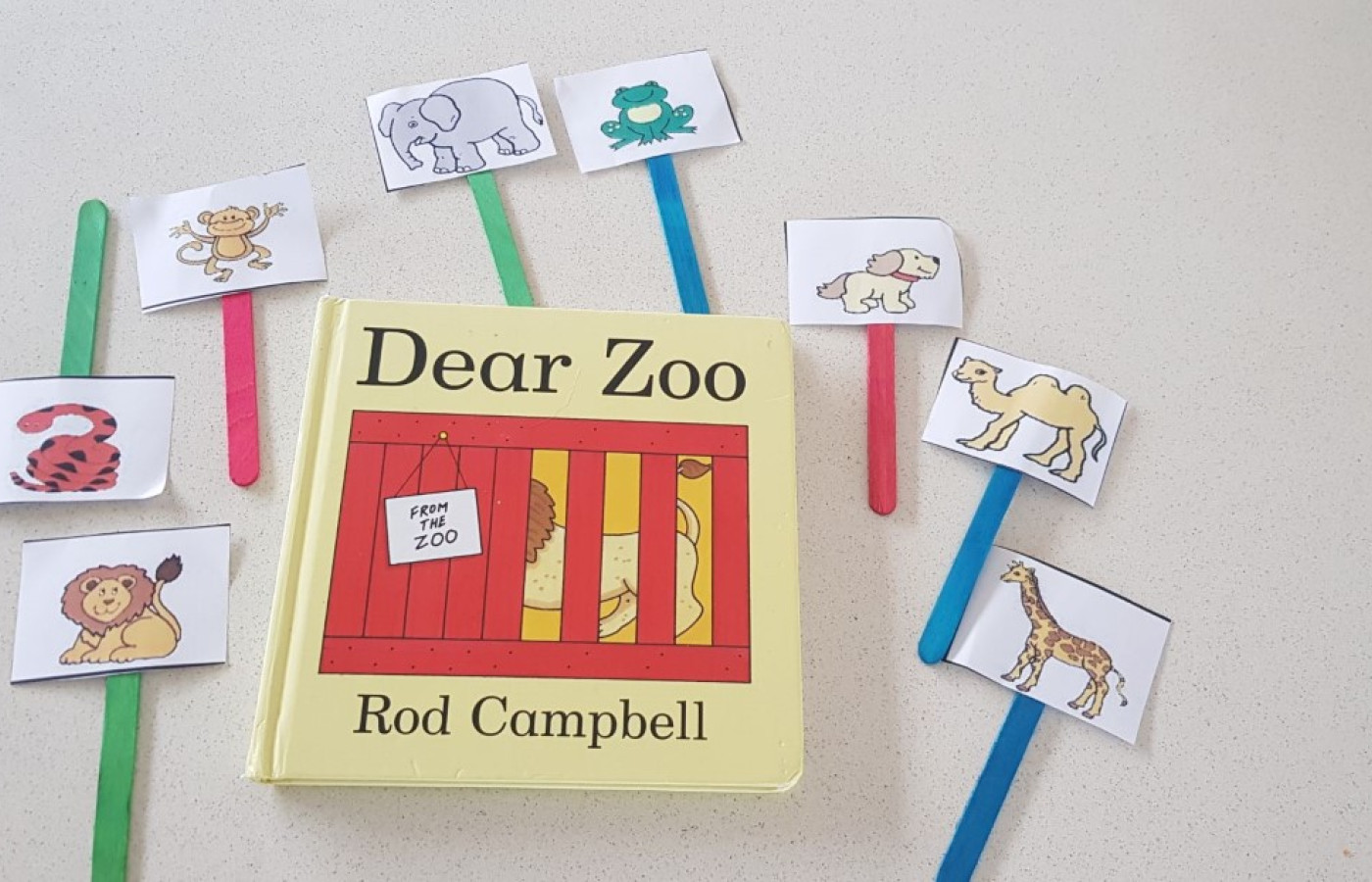"Dear Zoo" book experience

"Dear Zoo" book experience
Share the story, name animals and make puppets.
Materials Required
- Book "Dear Zoo" by Rod Campbell or watch the YouTube link below
- Paper, pencils, scissors, tape
- Paddle pop sticks, or wooden skewers
- Encourage your child to draw the animals or use images for younger children
Print outs of the animals in the story (elephant, giraffe, lion, camel, snake, monkey, frog, puppy)
Play experience profile
-
Ages:
-
Min Playtime15 - 30 Minutes
-
Energy LevelQuiet Play
-
Messiness Rating
-
EYLF Outcomes
Play Experience Preparation
Prepare your animal puppets from the "Dear Zoo" book by Rod Campbell - Children might like to help you colour and stick puppets onto paddle pop sticks - Children might like to be creative and draw their own animal puppets using the book as a guide.Experience Steps
- Use your puppets and hold each one up as you read the book "Dear Zoo" by Rod Campbell (or watch the YouTube clip below).
- After the story is finished, encourage children to take a closer look at each puppet.
- Talk about each animal - how many legs, sound they make, interesting characteristics.
- Discuss the reasons why the animals would or would not make good pets.

What to talk about, or questions to ask during the experience
- What is this animal called?
- Which animal has a long trunk?
- How many legs does a frog have?
- What sound does a camel make?
- Do you think a lion would make a good pet? Why or why not?
- Which animal is your favourite? Why?
- How many animals did he get from the zoo?
Build on this...
- Research your child's favourite animal with them.
- Where does it live? How much does it weigh? What does it eat? How do you know if it's a male or female lion? etc.
- You could also extend this experience with small plastic animals, Lego or wood offcuts and make a zoo of your own.
- Take a virtual zoo tour of Melbourne Zoo (see the link below).
WHO guidelines for physical activity and sedentary behaviour
Provide evidence-based public health recommendations for children, adolescents and adults on physical activity.
Learn more
Provide evidence-based public health recommendations for children, adolescents and adults on physical activity. Learn more
Go outside and creep like a lion hunting, or walk tall like a giraffe. This will all keep you and your child physically active.
EYLF Outcomes
The Early Years Learning Framework has been designed for use by early childhood educators working in partnership with families, children’s first and most influential educators.
View PDF
The Early Years Learning Framework has been designed for use by early childhood educators working in partnership with families, children’s first and most influential educators. View PDF
- Children engage with a range of texts and gain meaning from these texts
- Children interact verbally and non-verbally with others for a range of purposes
EYLF Principle
Principle 1: Secure, respectful and reciprocal relationships. Through a widening network of secure relationships, children develop confidence and feel respected and valued.
EYLF Practice
Practice: Intentional teaching. Intentional teaching is deliberate, purposeful and thoughtful. They use strategies such as modelling and demonstrating, open questioning, speculating, explaining, engaging in shared thinking and problem solving to extend children’s thinking and learning.
https://www.youtube.com/watch?v=Kzl9IyeMWto
https://www.youtube.com/watch?v=wqbYWw85yOg Virtual Tour of Melbourne Zoo
https://storyboxlibrary.com.au/
https://www.earlystartdiscoveryspace.edu.au/storytime-dear-zoo/ Join Tarryn from the Discovery Space at Early Start as she reads "Dear Zoo."
Author:


